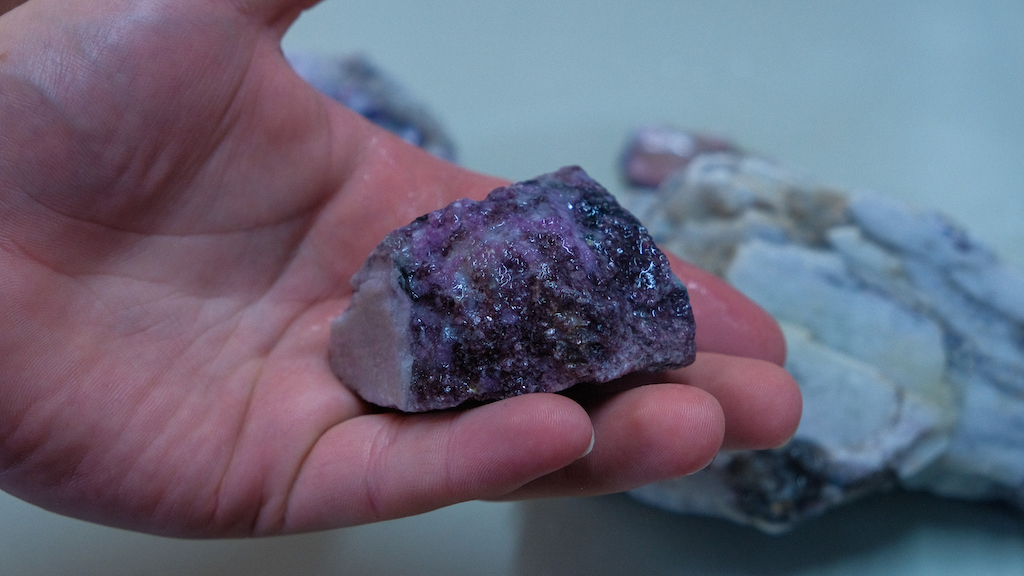
02 Dec Critical futures: What SA wants from its transition minerals
With vast deposits of minerals that make South Africa a key player in the green energy transition, Andiswa Matikinca investigates the future that stakeholders want to see
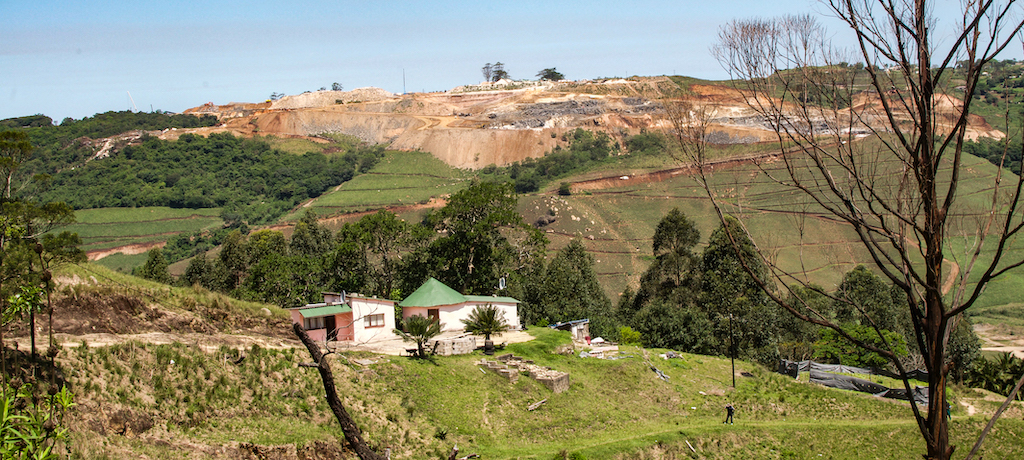
In the lush village of Umzumbe in southern KwaZulu-Natal, communities living adjacent to the SA Lithium mine say they are already experiencing the negative impacts of the operation and were never consulted about it. Photo: Aphiwe Moyo
On the eve of the second African Critical Minerals Summit held from December 2 2024 in Johannesburg, Oxpeckers zoomed into the mining of lithium, one of the minerals considered critical for both the energy and transport sectors. Lithium is a key component in the production of electric vehicles and in lithium-ion batteries for energy storage.
South Africa currently has two lithium mines recorded in the Department of Mineral Resources and Energy’s (DMRE) 2024 Operating Mines, Quarries and Mineral Processing Plants list. These are the SA Lithium mining project in Umzumbe, KwaZulu-Natal, and Norrabees Mine, operated by Namli Exploration and Mining just outside the small mission town of Steinkopf in the Northern Cape, which falls under the Namakwa district municipality’s jurisdiction.
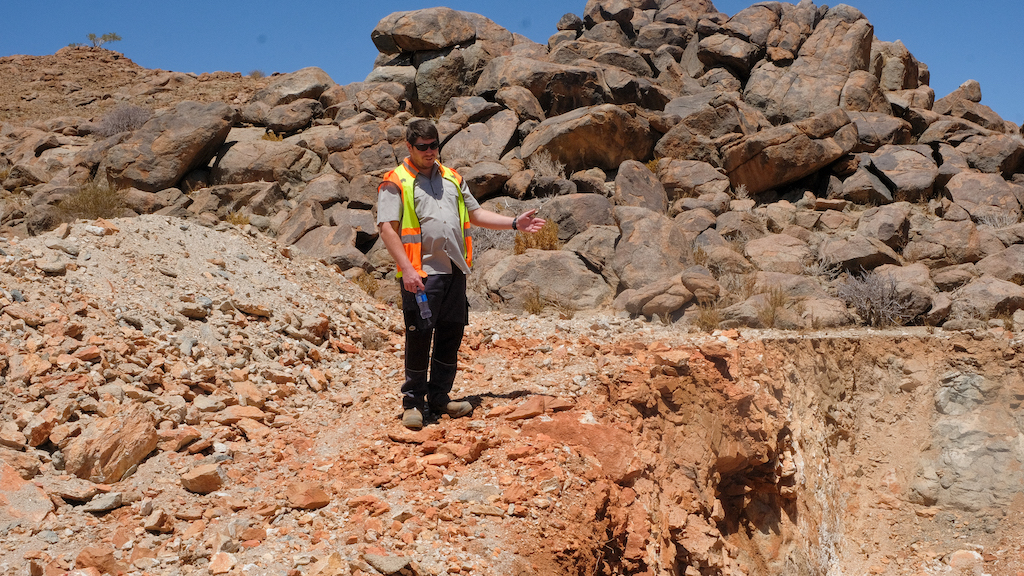
Riaan Zierman, geologist at Norrabees Mine, which is processing stockpiles of lithium left in the area in the 1960s. Photo: Dianah Chiyangwa
Norrabees, a relatively small operation still in its early stages, began its operations in February 2024, re-opening to process stockpiles of available lithium in the area that had been left behind in the 1960s where previous extraction activities focused on tantalum that was then in demand. Tantalum is a corrosion-resistant metal used in electronics.
“At that time they mostly mined for tantalum. They knew about lithium but they didn’t have any use for it. So there are a lot of stockpiles here that we can process before we even start mining,” said Riaan Zierman, a geologist at Norrabees.
Over an hour’s drive from the Norrabees Mine is the currently closed Blesberg Mine which also mines lithium and tantalum. Operated by Southern African Lithium and Tantalum Mining (SALT), a subsidiary of Marula Mining, the company was granted a mining permit by the DMRE for the development and open-pit mining of lithium, tantalum, niobium ores and feldspar until May 24 2026. The 5ha operation is one of the largest known mineralised pegmatite deposits and also the largest source of tantalum in the country.
Attempts to visit the mine and also reach out to Marula Mining general manager, Henk van Zyl, were unsuccessful at the time of publishing. The mine is reportedly closed due to issues relating to land claims.
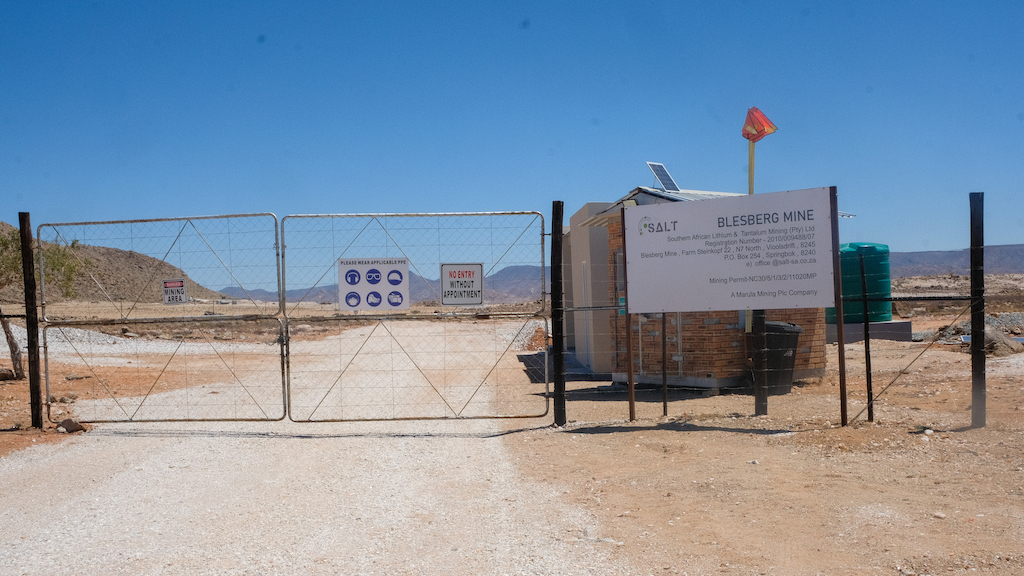
Blesberg Mine, one of the largest known mineralised pegmatite deposits and the largest source of tantalum in the country, was closed reportedly due to issues relating to land claims. Photo: Dianah Chiyangwa
Land rights
The manager of municipal planning at the Namakwa district municipality, Gerda Bezuidenhoudt, said concerns about mining in the region have been expressed by local communities as well as communal property associations (CPAs), which are landholding institutions established under the Communal Property Associations Act in order for beneficiaries of the land reform, restitution and redistribution programmes to manage land as a group.
Bezuidenhoudt said there has been conflict over the land rights within Namakwa as landowners and CPAs feel left out in the conversations over land use activities on their land. “The conflict over the land rights is a very crucial issue within Namakwa because of how people who are landowners and the CPAs feel that although it’s our land, we don’t have the right to say what must happen on our land,” she said.
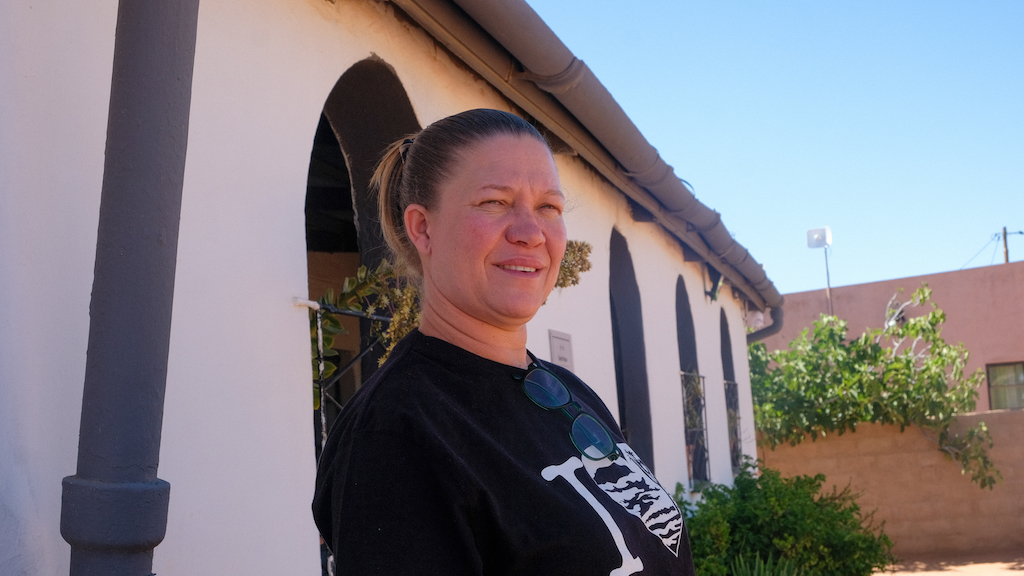
Letitia Pandohe: ‘We are looking forward to these lithium mines that will also help grow our towns.’ Photo: Dianah Chiyangwa
Letitia Pandohe, a Steinkopf resident and businesswoman, said although there are concerns about the one lithium operation just outside of Steinkopf, there is also excitement and anticipation within Steinkopf and surrounding areas for the opportunities that the mining of lithium will bring.
“We know Steinkopf is one of the towns that is not developed yet, so we are looking forward to these lithium mines that will also help grow our towns, especially Steinkopf and surrounding villages, and to see that our infrastructure in our towns will be developed and that more of our community people will be employed,” said Pandohe.
Pandohe mentioned that she is part of a local consortium that has developed a database of all the entrepreneurs and contractors in the area that will be submitted to the mines, ensuring that they are considered to tender for contracts as they become available.
Steinkopf is a town with a rich cultural heritage of the Nama people, and more of these mines should be working together with the communities to ensure that their activities do not interfere with the area’s rich cultural heritage and biodiversity, she added.
“When mines open or start being operational, they must come and engage with the community, to hear out what they want and what their needs are. If we can come on the same platform where we meet each other, then I think things will go on a positive side. Mines can grow, businesses can grow [in a way] that will not affect our local people here because we know our people are ancient cultural Nama people and we don’t want our culture and our heritage to die,” she said.

One of the main sources of lithium are pegmatite crystals, such as this one from Norrabees Mine in the Northern Cape. Photo: Dianah Chiyangwa
Critical minerals strategy
Speaking at the inaugural African Critical Minerals Summit in August 2023, Minister of Mineral Resources and Energy Gwede Mantashe said South Africa was in advanced stages of developing a critical minerals strategy to help industrialise and support the country’s just energy transition to a low- carbon future.
Mantashe emphasised that there is no universal definition of “critical minerals” and that several countries have interchangeably used and defined “critical minerals” according to their specific needs. He said the “criticalness” of a mineral should not only depend on who is using the mineral to satisfy a need, and that the African continent should develop its own critical minerals strategy to ensure that the extractivist nature of mining in the past is not repeated.
Questions sent to the DMRE inquiring about progress made on the proposed strategy and whether it would be outlined at the second summit in December 2024 remained unanswered at the time of publishing.
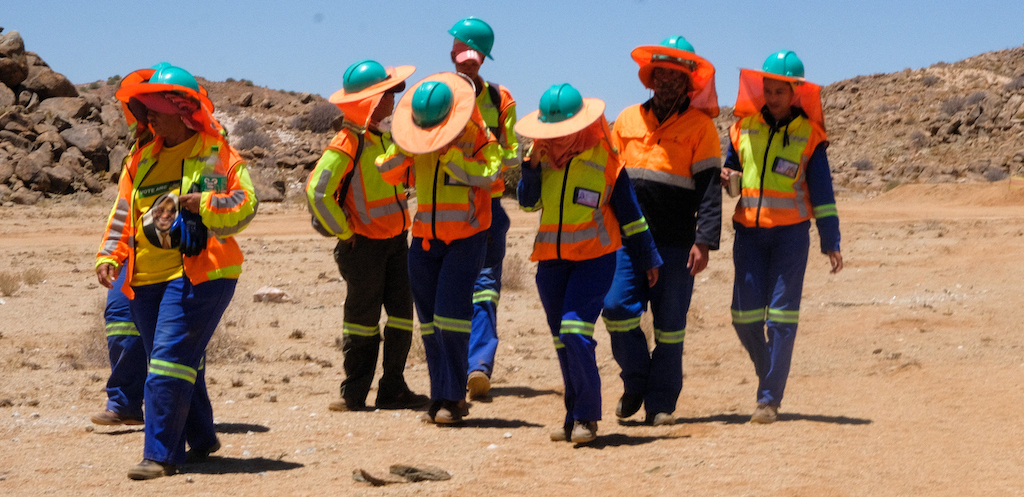
Locals from Steinkopf and surrounding villages who are employed at Norrabees Mine. Photo: Dianah Chiyangwa
Value creation
Gaylor Montmasson-Clair, senior economist and researcher at Trade and Industrial Policy Strategies, said the need for such a strategy is timely but there needs to be more commitment to implementation.
“For me it’s a matter of what’s the commitment to implementing the strategy once it’s designed because we’ve all seen so many of these master plans being developed and often for the right reasons, but then they need to be implemented, so what for me is important is how do we use such a potential strategy?” he said.
“It’s really important that we see how we leverage minerals for value creation, particularly when it comes to employment, so the broader strategy must be focused on labour-intensive activities in manufacturing, in services and operations and maintenance.”
As the global demand for lithium grows alongside extractive activities in lithium mining across South Africa and the rest of the continent, officials at local levels of governance are calling for policy makers and strategists at national level to take enough time to develop a proper strategy that benefits its indigenous people.
Brian Cloete of the Namakwa district municipality’s local economic development unit told Oxpeckers that although the African continent has the potential to create the best strategies for the mining of critical minerals, current mining legislation benefits foreign owners and operators. He suggested that these strategies need to focus more on encouraging local ownership, which will also encourage more sustainable mining practices.
‘Plan with us, for us’
Cloete and Bezuidenhoudt both emphasised the need for all plans for the critical minerals strategy and mining developments to begin with engagements at local level, taking into account issues of land ownership.
“We will be beating about the bush if we do not start right at the base, which speaks to land ownership, the land on which the project[s] must be developed,” said Cloete. “Ownership must be clarified and that ownership must be native, but many of these things are organised and arranged on a national and a provincial level. And on ground level, you just see things happening and it is actually a disgrace.”
Despite being a district that plays a prominent role in South Africa’s energy transition and hosting multiple renewable energy projects, Bezuidenhoudt said local government officials in the Namakwa district feel left out in some of the discussions around the planning which involves mining projects and some renewable energy projects.
“I think there’s a gap in terms of the communication to bring us up to speed and to plan with us for us and not without us,” said Bezuidenhout.
Concerns down south
In the lush village of Umzumbe in southern KwaZulu-Natal, the SA Lithium mine has become a nightmare for the communities adjacent to it who say they are already experiencing the negative impacts of the operation and were never consulted about it.
Speaking on behalf of the KwaHlongwa Tribal Authority in Umzumbe, local resident Melizwe Khawula told Oxpeckers that representatives from the mine visited the tribal authority to introduce themselves early in 2024 after they had already started prospecting and bulk sampling activities and they promised to return to consult with the broader community.
Sindisiwe Cele, a resident of Nkehlamandla village which has about 40 homesteads made up of a mixed population of young and old with mostly unemployed youth, reiterated that their side of the Umzumbe area was not consulted prior to any work beginning at the mining site.
“We first saw an influx of cars and trucks before they started with any digging and clearing out of the area, then that was followed by rumours that there was a mine coming and we were all asking amongst ourselves what mineral they were mining.
“We have only heard through the grapevine that the mineral they are mining might also be available where we are and that the mine could possibly start getting closer to our houses, but till this day no one has engaged us,” said Cele.
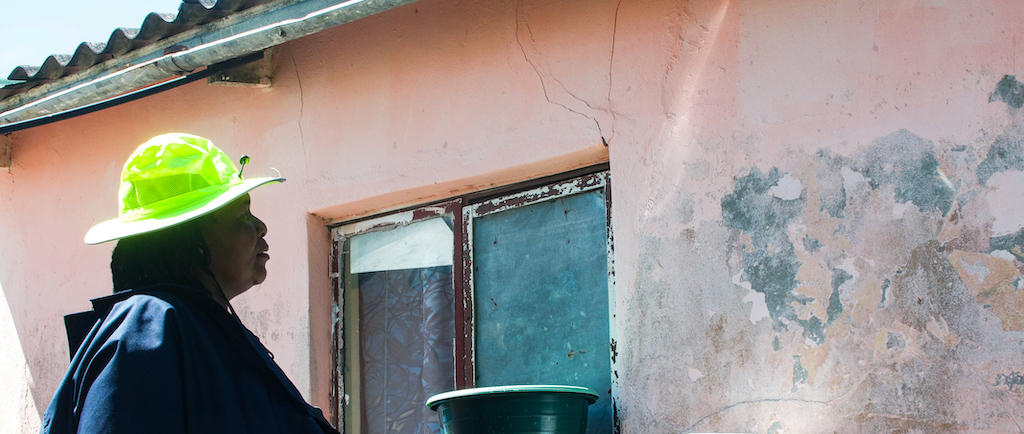
Sindiswe Cele, a resident of Nkehlamandla village, shows cracks caused by blasting at the SA Lithium Mine a few kilometres away from her home. Photo: Aphiwe Moyo
“What we want the mine to do is to send people to come talk to us about what is going on and also consider that we should get some compensation even if it is through employment opportunities because we are affected by the impacts of blasting which causes our homes to crack as well as noise and dust pollution,” she said.
This investigation is part of the Oxpeckers #PowerTracker investigative series titled ‘The human cost of energy in Africa’. Video production was done by Oxpeckers associate Dianah Chiyangwa and Suleiman M. Lawal
• Find the #PowerTracker digital tool and more investigations here
